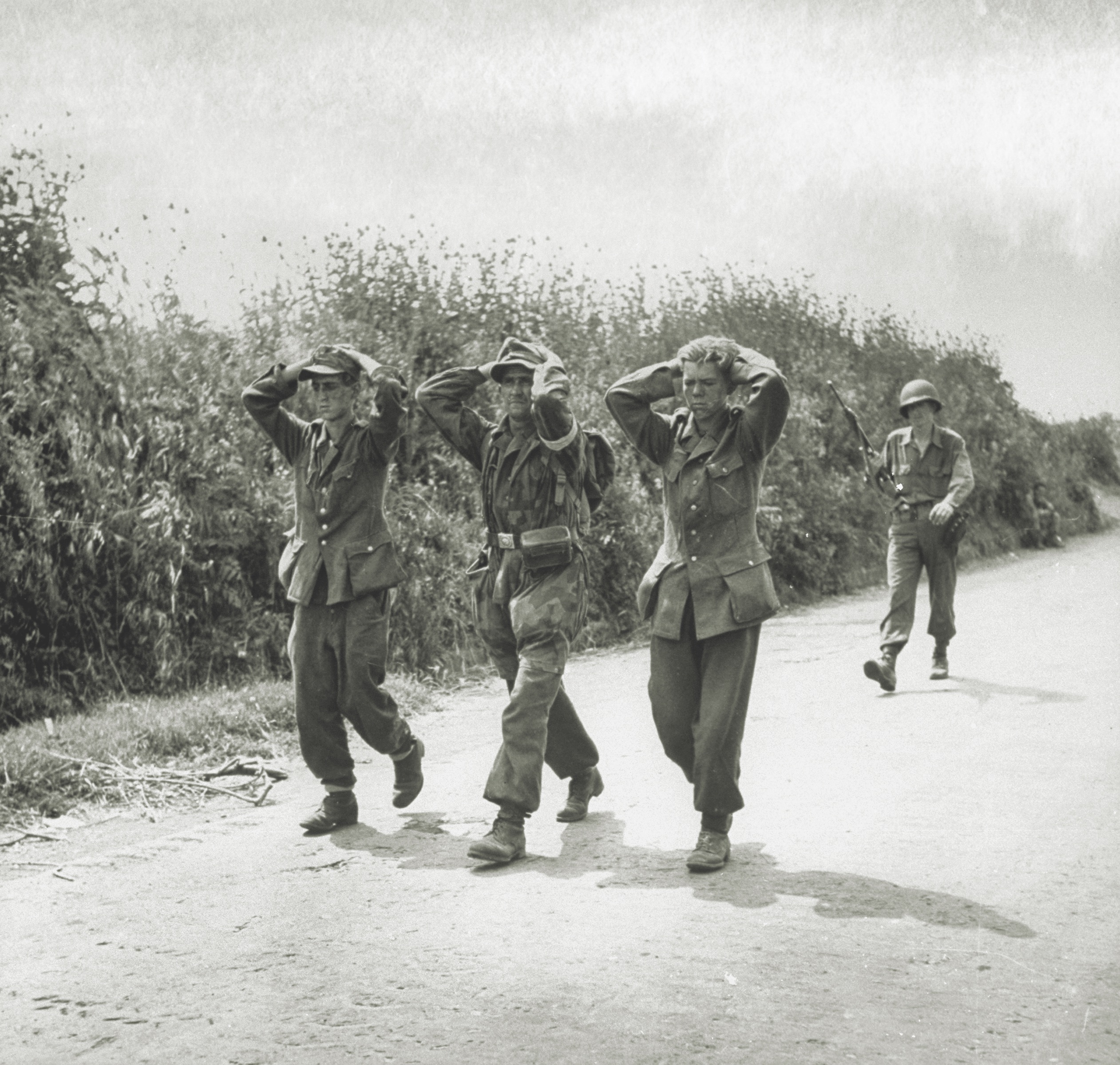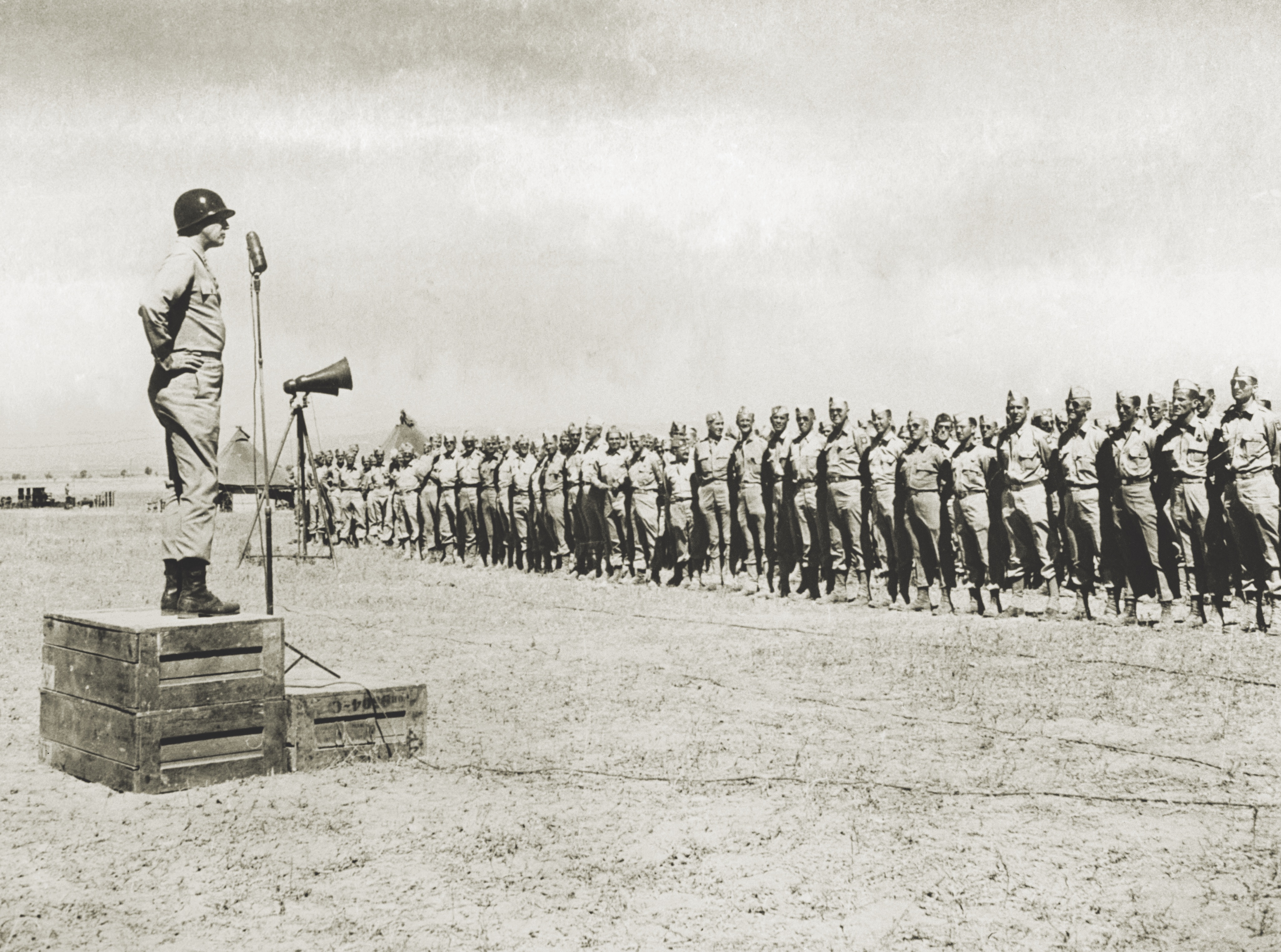A recurring issue in warfare—one that appears in the records of every modern conflict—is how prisoners of war should be dealt with. The summary execution of prisoners is clearly a war crime, as is refusing to accept an enemy’s surrender when he signals his desire to capitulate. In the confusion of battle, however, circumstances are not always so straightforward. To what degree are soldiers required to risk their own lives to capture an enemy who aims to kill them right up to the last moment? And what legal requirements apply to soldiers who face an enemy that has a record of ignoring white flags, for example, or violating other surrender conditions?
Winston Churchill once said that a prisoner of war “is a man who tries to kill you, and having failed to do so, asks that you not kill him.” Under the Geneva Convention, it is a war crime for soldiers either to kill prisoners after capturing them or to refuse to take prisoners altogether and kill everyone they encounter. But in such cases, who should be held accountable? Only the soldiers who committed the killings? Or also the commanders who ordered them to do so, whether explicitly or obliquely? Two American cases from wars 63 years apart illustrate how ambiguous orders and the misinterpretation of a commander’s intent can result in tragedy.
In two incidents on July 14, 1943, American soldiers of the 45th Infantry Division summarily executed German and Italian prisoners of war. In the first, Sergeant Horace West was in charge of a detail escorting prisoners of war back to a collection point. West stopped the prisoners, allowed a few of them to walk on, and then turned to the rest and declared that he would “kill the sons of bitches.” He shot them all with a .45 caliber Thompson submachine gun, and then walked down the line and fired an additional shot into anyone still showing signs of life. Later that afternoon, an infantry company commanded by Captain John Compton captured 36 German soldiers who had been defending positions near the Biscari airfield in Santo Pietro, a small village in southern Sicily. Compton ordered some of his infantrymen to form a firing squad and watched as they shot all the prisoners on the spot.
Word of these incidents reached Lieutenant General Omar Bradley, the commander of II Corps, the next day. When Bradley questioned Compton, the junior officer claimed that the murder of the German POWs was justified because he was “following orders.” The orders supposedly came from no less an authority than Lieutenant General George S. Patton Jr., the commander of Seventh Army. In the run-up to the Allied landings in Sicily, Patton had delivered one of his signature speeches, heavy on hyperbole and bellicosity, to his assembled troops. In an official statement after the incident, Compton said that he interpreted Patton’s speech to mean that whenever “the enemy was shooting to kill our troops and then that we came close enough to get him…he must die.”
Bradley promptly reported both incidents to Patton, his immediate superior. Patton dismissed the matter as “probably an exaggeration.” Curiously, however, he then told Bradley “to tell the officer responsible for the shootings to certify that the dead men were snipers or had attempted to escape or something.” That seemed to suggest that Patton was more interested in rationalizing Compton’s actions than investigating the incident. Bradley was outraged. Ignoring Patton’s instructions, he initiated court-martial proceedings against both Compton and West.

In a two-day trial, West pleaded not guilty to the charge of murdering 37 prisoners. His primary defense was that he was “fatigued and under extreme emotional distress” when he murdered the POWs. The board of officers sitting as judges convicted West on all charges. In a separate court-martial, Compton was charged with the murder of 36 POWs. On the stand he testified that Patton had told him and other officers that if “in leading your men against the enemy [you] find him shooting at you and, when you get within two hundred yards of him and he wishes to surrender…that bastard will die! You will kill him.” He went on to say: “Right or wrong, a three-star general’s advice, who has combat experience, is good enough for me and I took him at his word.” For his part, Patton said his remarks had been misconstrued and that he in no way meant to incite his soldiers to murder prisoners.
Captain Compton’s court-martial lasted longer than Sergeant West’s and had a markedly different outcome. West was sentenced to life imprisonment; Compton was exonerated. The 45th Infantry’s staff judge advocate immediately pointed out the disparity when the cases went up the line for his review; he also fastened on to the problem that Compton’s defense—that he was only following orders—was based on orders that clearly violated the laws of war. As Fred Borch, the historian of the U.S. Army Judge Advocate General’s Corps, has pointed out, “No unarmed person could be made to forfeit his life without the sanction of some tribunal.” Summary executions, therefore, are war crimes. Nonetheless, the army buried the records of both cases. Compton was reassigned without punishment and was killed in action a month later. West served 11 months in a military prison before he was returned to active duty and honorably discharged at the end of the war.
On May 9, 2006, during Operation Iron Triangle in Iraq, U.S. Army soldiers from 3rd Battalion, 187th Infantry—part of the 101st Air Assault Division’s 3rd Brigade—brought in the corpses of several Iraqi men they had killed during an action near Samarra. Rather than militant fighters, however, the deceased were elderly men and teenage boys who appeared to have been blindfolded and bound before they were shot. Four U.S. soldiers—Private First Class Corey Clagett, Specialist Juston Graber, Specialist William Hunsaker, and Staff Sergeant Raymond Girouard—were eventually arraigned on several charges, the most serious of which was murder.
As the cases moved to trial, it became increasingly clear that 3rd Brigade’s combat-aggressive leaders were in the habit of making the same sort of

bellicose statements that Patton was famous for. The most vocal of these officers was said to be the brigade’s commander, Colonel Michael Steele. According to witnesses, Steele had repeatedly stated that any military-age males his soldiers encountered in the operation’s target area “could be legally engaged or destroyed”—not just soldiers or armed insurgents but basically any males between the ages of 15 and 65. An officer on the brigade’s operational planning staff recounted that Steele’s orders distilled the rules of engagement for his men in exactly those terms: “shoot all military-aged males.” Numerous soldiers later testified that they also heard those words before the operation.
Girouard, the ranking soldier charged in the incident, explained his actions to investigators in words that indicated he interpreted Steele’s orders in starkly literal terms. “It did not matter if he were armed or not,” he said in a sworn statement, referring to a civilian he fired at that day. “He was a military-aged male, and we were told to kill all military-aged males.” Such an order, if given, would be a clear violation of the rules of lawful warfare.
After the Iraqi men were detained that day, Girouard allegedly told his squad that they were going to “go ahead and do these guys.” At least two soldiers refused to take part in such an act, orders or no orders. Clagett and Hunsaker had no such qualms. They later admitted shooting the prisoners and staging the scene to look as if the men had tried to escape. When one of the Iraqis was found to be still alive though badly wounded, Girouard allegedly ordered Graber to “put him out of his misery.” Graber was one of the soldiers who had earlier refused to participate in the killing of the prisoners, but at this point he stepped up and shot the injured man in the head, a decision that put him on the wrong side of the law.
Steele initiated a brigade-level investigation into the killings when the soldiers’ account of the incident did not match the evidence on the scene. But he didn’t report the matter up the chain of command, a failing that was later described as a “procedural infraction, not a war crime.” A separate investigation directed by the army’s senior commander in Iraq subsequently found that while Steele “did not condone or attempt to cover up” the killings of the Iraqi detainees, he had issued ambiguous guidance about the rules of engagement for the operation. His lack of clarity, investigators concluded, might well have factored into the unlawful killings.
In separate courts-martial, Clagett and Hunsaker pleaded guilty to murder and were both sentenced to 18 years in prison. Graber pleaded guilty to aggravated assault and received a sentence of nine months in exchange for testifying against the others. Interestingly, as part of their plea deals, each of the soldiers was required to state that 3rd Brigade’s rules of engagement had played no part in their decision to kill the prisoners. Their squad leader, Girouard, denied having ever ordered his men to kill the prisoners and admitted only to assisting in the cover-up after the murders. He was convicted on a reduced charge of negligent homicide and sentenced to 10 years.
In an appeal after his conviction, Hunsaker protested that “it is not fair for above me, the men who gave the orders, to do less time, or none at all.” He was by no means alone in accusing the army of applying different standards of military justice depending on the rank of the accused.
“Anytime you fight,” Steele was known to say during his time in command of the 3rd Brigade, “you always kill the other son of a bitch—always.” An aggressive spirit is no crime in an infantryman—to the contrary, it is a vital attribute in combat—and Steele violated no laws or code of conduct by trying to instill that mindset in his troops. But needless violence must be avoided whenever possible, and the rule of law must be respected even in the chaos of war. Otherwise, soldiers won’t have the moral compass that distinguishes them from criminals.
When it was suggested to Steele that his orders might have caused his soldiers to believe he was instructing them to not take any prisoners, he objected by using almost the same words that Patton did in 1943. “While I never specifically stated that every military-age male should be killed,” Steele later wrote, “the unit’s understanding fell within my intent.” While he went on to insist that he “didn’t mean that soldiers should wantonly kill every man on the objective,” the distinction, by all accounts, never filtered down to the infantrymen in the rifle squads that were part of the assault force in Operation Iron Triangle.
Several conclusions emerge from a comparison of the incidents in Sicily in 1943 and in Iraq in 2006. First, the American soldiers who carried out the killings in each case were indisputably guilty of murder; there is little room to argue for any other interpretation of their actions. Second, the crimes in each instance were directly connected to commanders’ orders that subordinates interpreted as “take no prisoner” directives. Third, junior personnel were court-martialed and imprisoned while senior officers whose command philosophies may have encouraged their crimes were never prosecuted. Patton was at a greater remove from the incidents in Sicily and was never censured in any way; Steele received a formal reprimand for his application of the rules of engagement in Operation Iron Triangle, an administrative procedure that effectively meant he would not be promoted again. He retired as a colonel in 2010.
Clearly, neither Patton nor Steele ever directly ordered soldiers to refuse to accept an enemy’s surrender or to murder any prisoners they did take. To that extent, the soldiers who carried out those crimes were fully responsible for their own actions. But these cases, separated by more than half a century, show how important it is for military commanders to avoid ambiguous orders that leave their moral intentions open to interpretation. MHQ
John A. Haymond is the author of Soldiers: A Global History of the Fighting Man, 1800–1945 (Stackpole Books, 2018) and The Infamous Dakota War Trials of 1862: Revenge, Military Law, and the Judgment of History (McFarland, 2016).
[hr]
This article appears in the Autumn 2019 issue (Vol. 32, No. 1) of MHQ—The Quarterly Journal of Military History with the headline: Laws of War: The Perils of Ambiguity

Want to have the lavishly illustrated, premium-quality print edition of MHQ delivered directly to you four times a year? Subscribe now at special savings!





